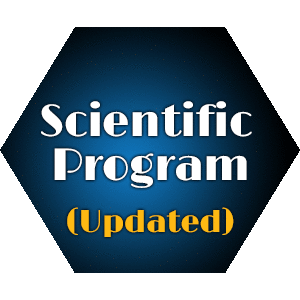
Maryam Sayah
Islamic Azad University, Iran
Title: Bat inspired algorithm with the aid of artificial neural networks for optimization of tartrazine adsorption onto polypyrrole/SrFe12O19/graphene oxide nanocomposite
Biography
Biography: Maryam Sayah
Abstract
Tartrazine as an anionic azo dye is widely used in several industries and is considered as highly toxic to humans. Therefore, it is necessary to treat the dye-contaminated wastewater prior to its discharge to the environment. This work presents the application of bat inspired algorithm with the aid of artificial neural networks (ANN-BA) as a novel metaheuristic algorithm in chemistry for optimization of tartrazine dye adsorption onto the novel polypyrrole/SrFe12O19/graphene oxide (GO) nanocomposite from aqueous solutions. The polypyrrole/SrFe12O19/GO nanocomposite was fabricated by an in situ polymerization process and its structural and magnetic properties were studied by means of several instrumental techniques. Four factors affecting adsorption process including initial concentration, adsorbent dosage, pH and shaking rate were optimized in a batch system using response surface methodology (RSM) and bat inspired algorithm (ANN-BA). In comparison to the RSM, the ANN- BA model obtained through Levenberg Marquardt back propagation methodology, gave higher percentage removal (94%) about 6%. Under optimal conditions obtained by ANN-BA, the Langmuir adsorption isotherm model with monolayer maximum capacity(qmax) of 123.5 mgg-1 and pseudo-second-order kinetic model fitted the experimental results with determination coefficients (R2) of 0.9986 and 0.9989, respectively. Thermodynamic studies revealed that tartrazine adsorption was endothermic, spontaneous, and feasible process. Moreover, the adsorbent application in wastewater and its regeneration studies depicted that the nanocomposite can be applied as an effective, magnetic separable and reusable adsorbent in environmental clean-up.

